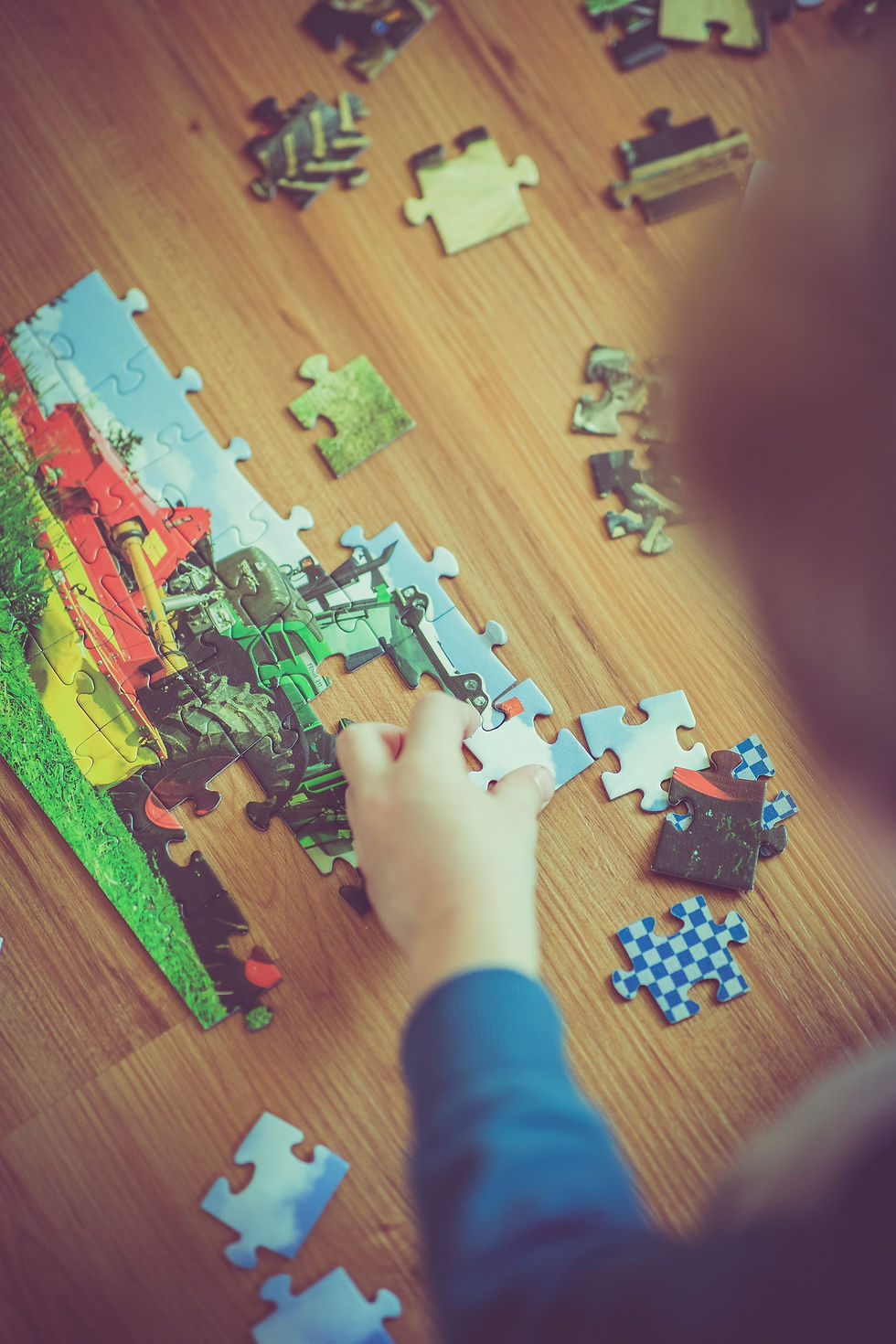Concepts, Does Your Child Know the Basics?
- Alison McDonald
- Jul 5, 2021
- 4 min read
In linguistic terms, basic concepts are the words that help us understand and describe the world around us. They are the words that describe positions, colours, shapes, size, time, sequences, quantities, qualities, emotions, measurements, comparisons, patterns and directions. We recognise these words as adjectives, adverbs and prepositions.
These words are among the most important that children learn for social and academic success. Not only do these words enrich a child’s vocabulary, but understanding the concepts represented by these words enable children to develop their thinking processes.
Successful language learners understand these concepts in a range of contexts. Conversely, those who are slower to develop their language skills may learn a concept in one situation but not understand it in another context. For example, a child may learn that the oven is ‘hot’, but not immediately relate the word to the sensation of feeling warm on a hot day.
Does my child understand basic concepts?
Children who find it challenging to learn basic concepts may:
Have trouble following instructions
Use the wrong concept word when speaking, e.g. instead of it’s ‘in’ the cupboard, they may say something like it’s ‘on’ the cupboard.
Talk in general terms rather than give specific information, e.g. ‘I want that one there’, rather than ‘Can I have the little blue block?’
They may also find it hard to:
Understand language (Comprehension)
Clearly express their thoughts and ideas
Tell stories with sufficient details for others to understand
Conceptualise information
Complete puzzles
Solve problems
Develop literacy
Develop their play skills
Engage in social games and interactions

Photo by Markus Spiske on Unsplash
What concepts should my child understand?
Children learn concepts through their personal experiences, and as such, concept development is not necessarily linear. Nevertheless, here are some examples of concepts children generally acquire.
Reference: vocabulary 108-119.indd on the LinguiSystems website
1-2 years
• Follows simple spatial directions, such as in and on • Understands another • Uses simple directional terms, such as up and down • Uses two or three prepositions, such as on, in, or under
2-3 years
• Distinguishes between in and under, one and many • Understands number concepts of one and two • Understands size differences, such as big/little • Understands in, off, on, under, out of, together, away from • Begins to understand time concepts of soon, later, wait • Selects three that are the same from a set of four objects • Selects the object that is not the same from four things with three of them being identical • Begins to use adjectives for colour and size
3-4 years
• Follows quantity directions empty, a lot • Follows equality directions same, both • Understands next to, beside, between • Identifies colours • Matches one-to-one • Points to object that is different from others • Uses position concepts behind, in front, around
4-5 years
• Understands comparative and superlative adjectives, such as big, bigger, biggest • Understands time concepts yesterday, today, tomorrow, first, then, next, days of the week, last week, next week • Understands different, nearest, through, thin, whole • Identifies positional concepts first, middle, last
5-6 years
• Understands opposite concepts, such as big/little, over/under • Understands left/right • Understands number concepts up to 20 • Answers “How are things the same/different?” • Uses adjectives for describing • Uses comparative adjectives, such as loud, louder • Uses yesterday and tomorrow • Uses adverb concepts backward and forward • Uses prepositions through, nearest, corner, middle • Names ordinal numbers, such as first, second, third

Tips for Teaching Concepts
1. Focus on teaching one or two concepts at a time
2. Talk about the word and what it means throughout the day,
E.g. big, bigger, biggest - You have a big cup, but Daddy’s cup is even bigger.
His cup is the biggest!
3. Daily routines are an excellent opportunity to teach concepts
Sorting washing
Shopping
Putting away toys, clothes, food
Cooking
Reading books
Bathtime
4. Make sure you have your child’s attention. Get face-to-face with your child.
5. Point to the example of the concept (e.g. object, picture, the person doing an action).
E.g. Look, the teddy is in the middle of the bed.
6. Repeat the concept word lots of times while showing your child what it means.
E.g. The teddy is in the middle. He’s not on the edge of the bed; he’s in the middle; he’s in the middle of the bed. He won’t fall off because he’s in the middle.
7. Use the word in a sentence.
E.g. The teddy is in the middle of the bed; now I’m in the middle! Can you jump in the middle?
8. Relate the word to another example of the concept,
E.g. When we sit on the lounge, you like to sit in the middle; you sit between mummy and daddy in the middle.
9. Help your child think of another example of the concept.
E.g. Can you think of something else that is in the middle? That’s right; the trampoline is in the middle of the backyard.
If your child finds it hard to comprehend language or you are struggling to help them follow instructions, then we’re here to help. At Newcastle Speech Pathology, we love to see parents equipped with the knowledge and skills to help their children become confident communicators.
Alison McDonald, Director, Newcastle Speech Pathology
#basicconcepts #comprehension #orallanguage #preschoollanguage #kindergarten #parenttips #NDIS #Newcastlespeechpathology #speechmadesimple
.png)
Comments